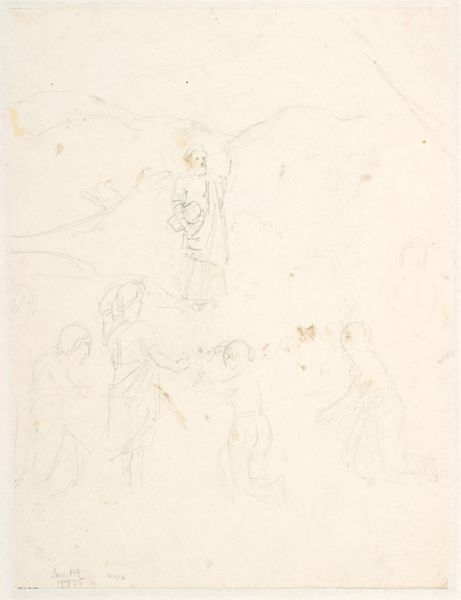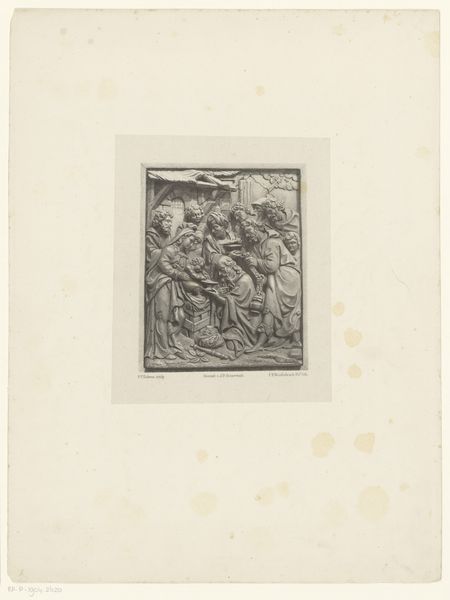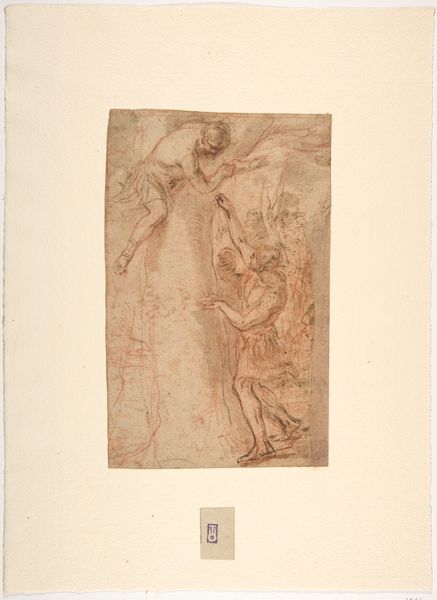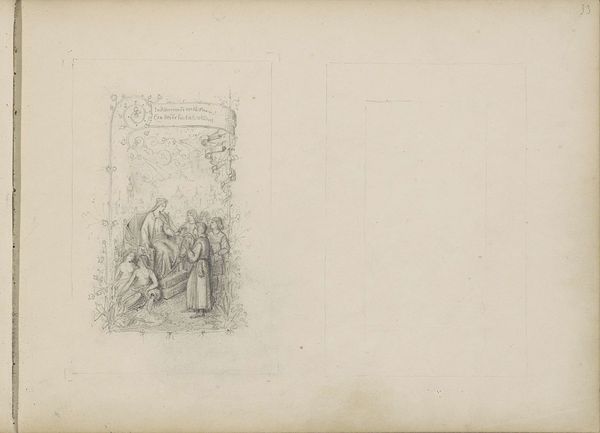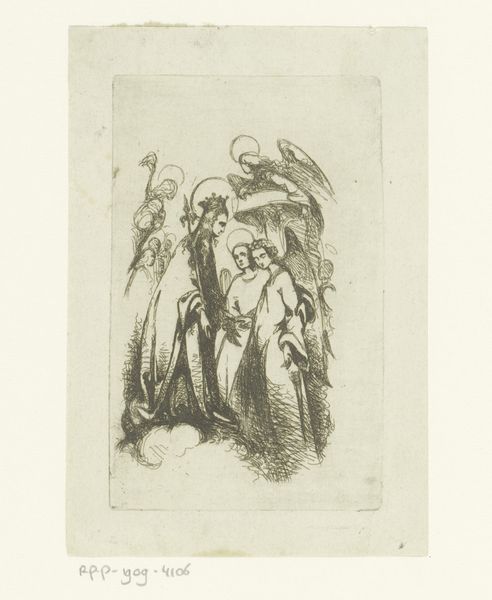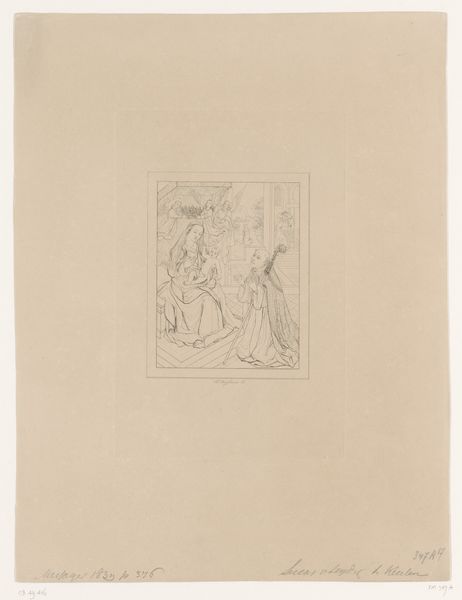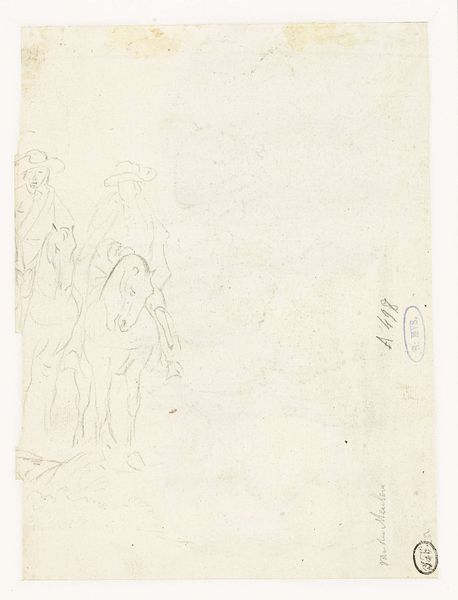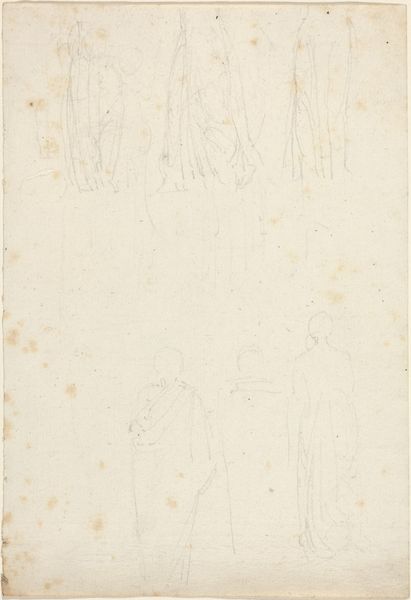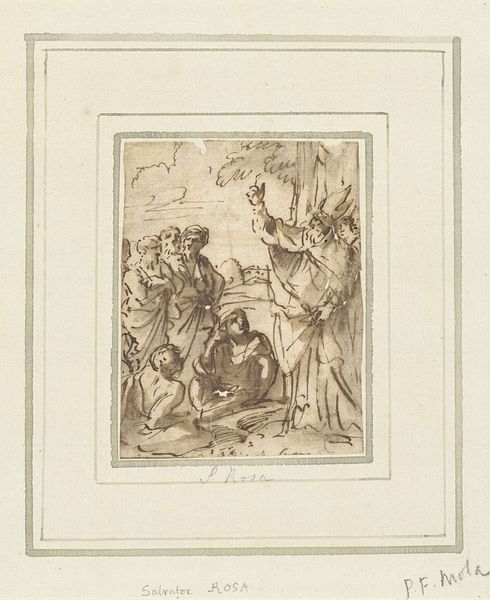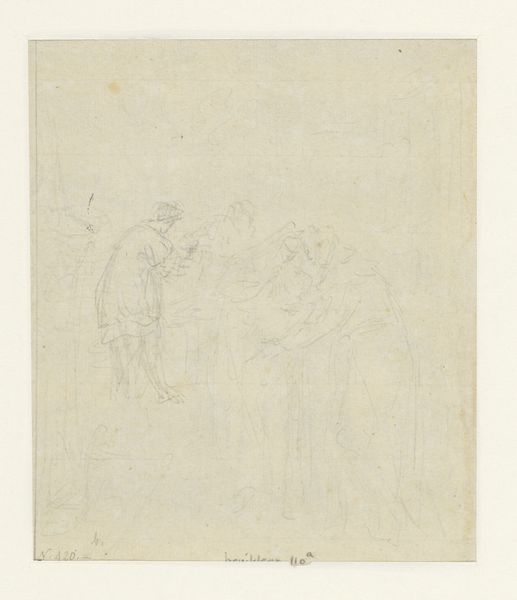
drawing, pencil
#
drawing
#
figuration
#
pencil
#
history-painting
#
academic-art
Dimensions: sheet: 35.24 × 28.58 cm (13 7/8 × 11 1/4 in.)
Copyright: National Gallery of Art: CC0 1.0
Editor: So, here we have Augustus Vincent Tack's pencil drawing, "Study for 'The Sermon on the Mount,'" from around 1932. It's a preliminary sketch, I guess, but it already has a kind of ethereal, hopeful quality, especially in the figure at the top. How do you interpret this work, and how does it connect with larger conversations? Curator: Tack’s piece, while seemingly traditional in its religious subject, offers a compelling lens through which to examine early 20th-century American anxieties and aspirations. Given its date, c. 1932, consider the socio-political climate: the Great Depression is in full swing. What role might religious imagery play in providing solace or a sense of collective identity during such a period of widespread hardship? Editor: That's interesting. It does seem like it would offer a kind of escape or promise. But how does it reflect contemporary ideas, particularly considering the changing role of religion in society at the time? Curator: Exactly! While religion has historically served as a unifying force, the early 20th century saw increasing secularization and diverse interpretations of faith. Tack’s representation invites us to consider whose voices are amplified and whose are marginalized within the context of this sermon. Look at the figures depicted—are they representative of the broader community? How might their gender, race, or class influence their relationship to the teachings being presented? Editor: I hadn’t really considered the social dynamics within the drawing itself. Now I’m wondering about who he included, and more importantly, who he might have left out. Curator: Precisely. By engaging with the work through this lens, we can see it as more than just a religious scene; it’s a commentary on the social fabric of the time. Editor: That shifts my perspective completely! I was focused on the religious aspect, but now I see it as a reflection of its time and Tack's possible biases or intentions. Curator: Art often acts as a mirror reflecting societal values and power structures, even when seemingly focused on spiritual themes. It also is our responsibility to use historical works like Tack’s as an encouragement toward a more inclusive, egalitarian future.
Comments
No comments
Be the first to comment and join the conversation on the ultimate creative platform.
